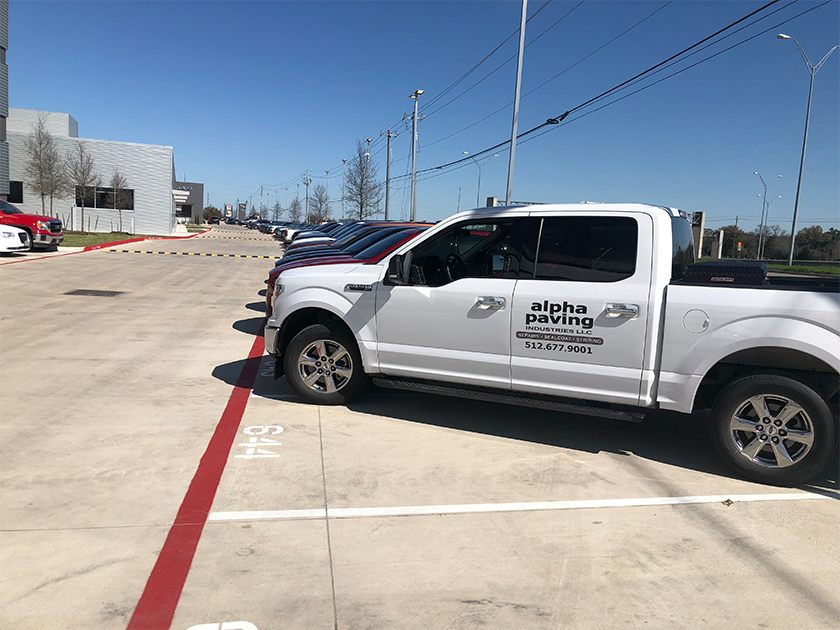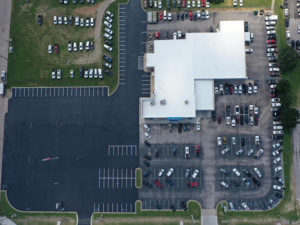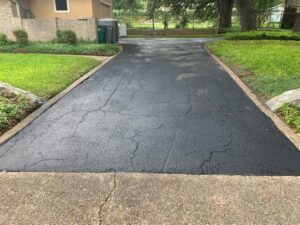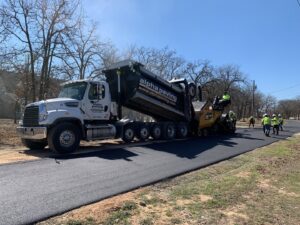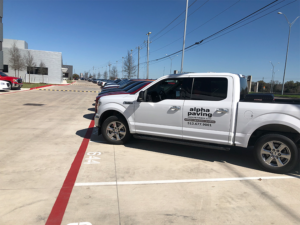 The earliest cars in the United States were costly to purchase, so the automobile remained a luxury item during the last years of the 19th century. In 1901, Ransom Olds began producing more-affordable cars by implementing stationary production lines on a large scale, and Henry Ford expanded and improved the concept. In 1908, Ford introduced the Model T, which had a price that was within the reach of many middle-class families. As a result, cars became increasingly common, but drivers tended to limit themselves to urban environments. Many cities had started paving their streets decades before the introduction of the automobile, but pavements usually ended at the city limits. Even as counties and states began to pave more roads, pavement markings remained rare in all areas, including urban environments. Michigan and California were early adopters of standardized centerlines on main roads within their respective states, but road markings did not have any national regulations until 1935. Significant updates to these regulations were made in 1962, 1978, and 1993. More than a century after their introduction, pavement markings continue to evolve to meet the changing needs of those who use American pavements.
The earliest cars in the United States were costly to purchase, so the automobile remained a luxury item during the last years of the 19th century. In 1901, Ransom Olds began producing more-affordable cars by implementing stationary production lines on a large scale, and Henry Ford expanded and improved the concept. In 1908, Ford introduced the Model T, which had a price that was within the reach of many middle-class families. As a result, cars became increasingly common, but drivers tended to limit themselves to urban environments. Many cities had started paving their streets decades before the introduction of the automobile, but pavements usually ended at the city limits. Even as counties and states began to pave more roads, pavement markings remained rare in all areas, including urban environments. Michigan and California were early adopters of standardized centerlines on main roads within their respective states, but road markings did not have any national regulations until 1935. Significant updates to these regulations were made in 1962, 1978, and 1993. More than a century after their introduction, pavement markings continue to evolve to meet the changing needs of those who use American pavements.
What Are the Standard Types of Pavement Markings?
What Are Some Common Road Markings?
Asphalt companies in Texas typically follow the national standards for pavement markings on public streets. Whether you are driving on a divided boulevard in the city or a rural highway, you can expect to see the following markings.
• Yellow lines mark the center of a pavement that has traffic flowing in both directions. A solid yellow line in your lane indicates that you should not pass. A broken yellow line in your lane indicates that it is legal for you to pass if it is safe to do so. If there is a solid yellow line in each lane, neither driver should pass. If the road has a center turn lane, the normal way to represent it is to paint a solid yellow line next to a broken yellow line on each turn lane’s side. Naturally, if crossing a solid line is the only way to avoid an accident, turn into your driveway, or make a legal left turn, you are unlikely to receive a ticket for the violation.
• Dotted white lanes indicate lane boundaries when driving down a road or street with multiple lanes of vehicles moving in the same direction. Solid white lines serve a purpose similar to solid yellow lines, but they are a subtler way of discouraging drivers from crossing the line and not necessarily a prohibition. These lines can define turn lanes, roadway shoulders, or HOV lanes. However, if there are two solid white lines, you should consider them a prohibition against crossing.
• Wide, white lines that are perpendicular to travel are stop bars. As the name implies, these markings indicate the point at which your vehicle should stop. Stop bars are common at traffic signals, railroad crossings, crosswalks, and stop signs. Parking lot striping contractors often apply them at exits, near crosswalks, and at intersecting traffic aisles, and they may include stop signs, verbiage, or both.
• Painted arrows indicate the direction of travel. Straight arrows indicate that you should go straight, arrows pointing to the right indicate that you must turn right, and arrows pointing to the left indicate that you must turn left. Like stop bars, you can find traffic arrows on public roads and parking lot pavements; when performing parking lot maintenance Austin TX striping contractors often incorporate arrows to help keep traffic flowing smoothly throughout the parking lot.
Austin Texas businesses, homeowner associations, and government agencies know that they can trust Alpha Paving for exceptional results at competitive prices. We offer a full range of concrete and asphalt services, including parking lot striping, asphalt sealcoating, thermoplastic striping and thermoplastic markings, asphalt crack repair, street maintenance, asphalt overlays, road construction, asphalt milling, parking lot signs and car stops, asphalt patching, and speed bump installation. Our clients include educational institutions, hotels, health care facilities, municipalities, retailers, churches, property management companies, airports, and industrial facilities. We have the expertise, integrity, and staffing to handle even large, complex projects. If you would like to request a free quote, you can use our online form to contact us. If you would rather call, our number in Round Rock is 512-677-9001.


